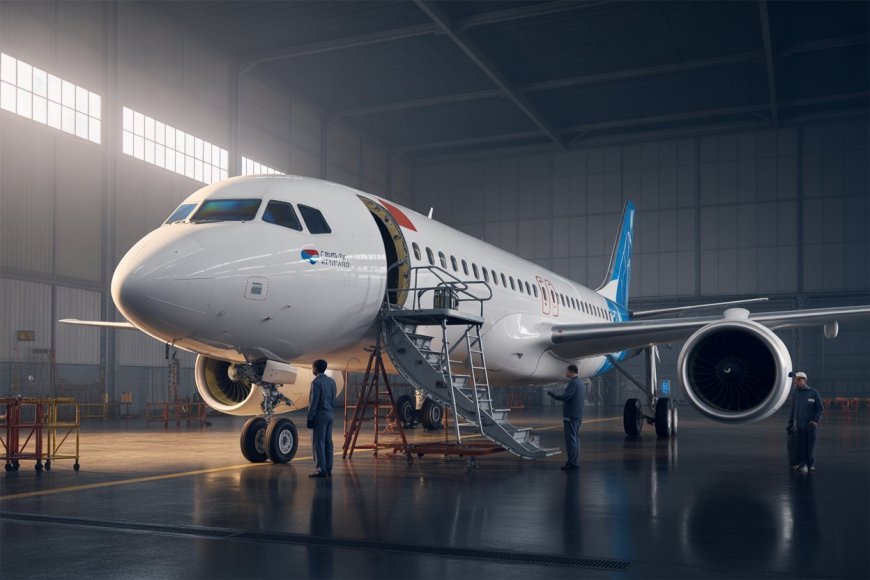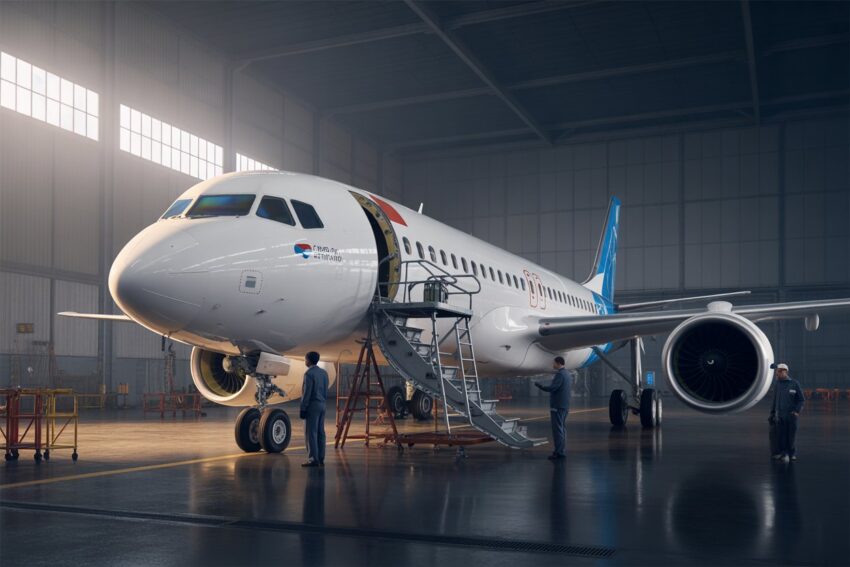Air India Shifts Aircraft Maintenance In-House with Singapore Airlines’ Expertise for Enhanced Safety and Efficiency: All You Need To Know


Following the tragic crash of flight AI171 in Ahmedabad, Air India is taking significant steps to improve the safety and operational reliability of its fleet. The airline has decided to bring much of its aircraft maintenance in-house, with Singapore Airlines (SIA) providing technical expertise and guidance. This shift is part of Air India’s broader plan to modernize its operations and enhance safety across its growing fleet.
The Push for In-House Aircraft Maintenance
Air India has historically depended upon external firms for servicing and maintaining their aircraft. Following the recent incident however, the carrier has recognized the need to more closely manage its maintenance processes. Together with its partner Singapore Airlines, who owns a 25.1% stake in the airline, the carrier is now moving towards in-house maintenance to streamline efficiency and sharpen operational accountability.
The new maintenance model will see Air India gradually taking over routine maintenance tasks, including pre-flight checks, daily inspections, and troubleshooting. Singapore Airlines, with its extensive experience in operational excellence, will assist in this transition by sharing best practices and providing operational expertise. This move aims to reduce turnaround times and improve operational reliability across Air India’s expanding fleet.
A Shift in Priorities: Safety First
The Ahmedabad crash of flight AI171 was a pivotal moment for Air India. The accident triggered an emergency audit of the airline’s safety procedures and fleet inspections. Safety has now become the airline’s number one priority, with maintenance being a crucial part of this focus. Moving critical maintenance tasks under its control allows the airline to act quickly in case of any issues, providing greater accountability for its operations.
An Air India spokesperson mentioned that the decision to bring maintenance in-house was driven not only by the tragic incident but also by the airline’s expansion plans. With over 570 aircraft in its future fleet, including a substantial number of widebody jets, the airline’s existing maintenance infrastructure was simply not sufficient to support the scale of operations it was aiming for.
The Long-Term Transformation of Air India
The revision of maintenance protocols at Air India is part of the company’s broader overhaul strategy. The airline chose not to implement such alterations after its privatization in 2022 for the sake of maximizing aircraft utilization and expedites in service volume. Air India’s recent changes to the privatization airline strategy indicates a significant prioritization on safety and operational refinement. Thus allows for greater realization of the privatization strategy goals.
This shift also aligns with the airline’s broader vision to modernize its fleet and enhance customer service. By taking control of maintenance operations, Air India aims to reduce dependency on third-party services and ensure more control over the quality and timing of maintenance activities. The airline believes this will help in improving safety compliance and increasing the overall reliability of its fleet.
The Role of Singapore Airlines
Singapore Airlines will be integral to Air India’s shift to autonomous maintenance. As one of the distinguished global flag carriers, SIA possesses significant depth of operational, maintenance, and industry best practices. SIA’s operational training will also enable Air India to establish a comprehensive maintenance strategy and prepare its internal personnel to manage and sustain the increasing needs of a vast and multi-fleet structure.
SIA will guide Air India’s teams in areas such as maintenance procedures, regulatory compliance, and equipment handling, ensuring that the airline meets international standards for safety and operational efficiency. The support will also help Air India to maintain its fleet on time, reducing the downtime that often occurs when relying on external providers.
Scaling Up to Meet the Demands of a Massive Fleet
Due to Air India’s immense plans of fleet expansion, there is a need to improve their the maintenance workflows. The carrier is expected to take delivery of 570 planes within the next few years, which includes a large order of widebody jets. This development will demand a more advanced and autonomous maintenance and repair support infrastructure to serve the growing fleet. Air India considers the self-sustained maintenance model the most effective solution to these issues.
In addition, this move will help Air India cut turnaround times and improve operational efficiency, leading to better flight schedules and less time spent on maintenance-related delays. The new approach will be a critical factor in the airline’s ability to manage its expanding fleet while ensuring the safety and reliability of its services.
Building a Self-Reliant Maintenance Ecosystem
This evolution aligns with the trend of both low-cost and full-service airlines attempting to provide access to South Africa, Kenya, and Egypt. The growing number of routes available certainly reflects the increased desire for cultural exchange, trade relations, and the rapidly expanding eco-tourism and adventure tourism markets.
As part of this plan, the airline will also focus on continuous training and capacity building within its maintenance teams. By developing its internal capabilities, Air India aims to maintain its fleet at the highest standards of safety and operational reliability.
The Bigger Picture: Strengthening Safety and Trust
The move to in-house maintenance is more than just improved efficiency; it also focuses on gaining trust with passengers while keeping safety in mind during all procedures. Air India is taking significant steps in regard to providing safer and more reliable operations. Maintaining competitive advantage in the expanding aviation market will be Air India’s ability to provide safety and reliability to its expanding customer base.
Conclusion: Moving Forward with Confidence
The partnership with Singapore Airlines and the transition to in-house maintenance mark a pivotal moment in Air India’s evolution. With a clear focus on safety, efficiency, and expansion, the airline is positioning itself for a future where it can compete on both a national and global level. As Air India continues its transformation, passengers can expect a more reliable, safe, and customer-focused airline.
The post Air India Shifts Aircraft Maintenance In-House with Singapore Airlines’ Expertise for Enhanced Safety and Efficiency: All You Need To Know appeared first on Travel And Tour World.






